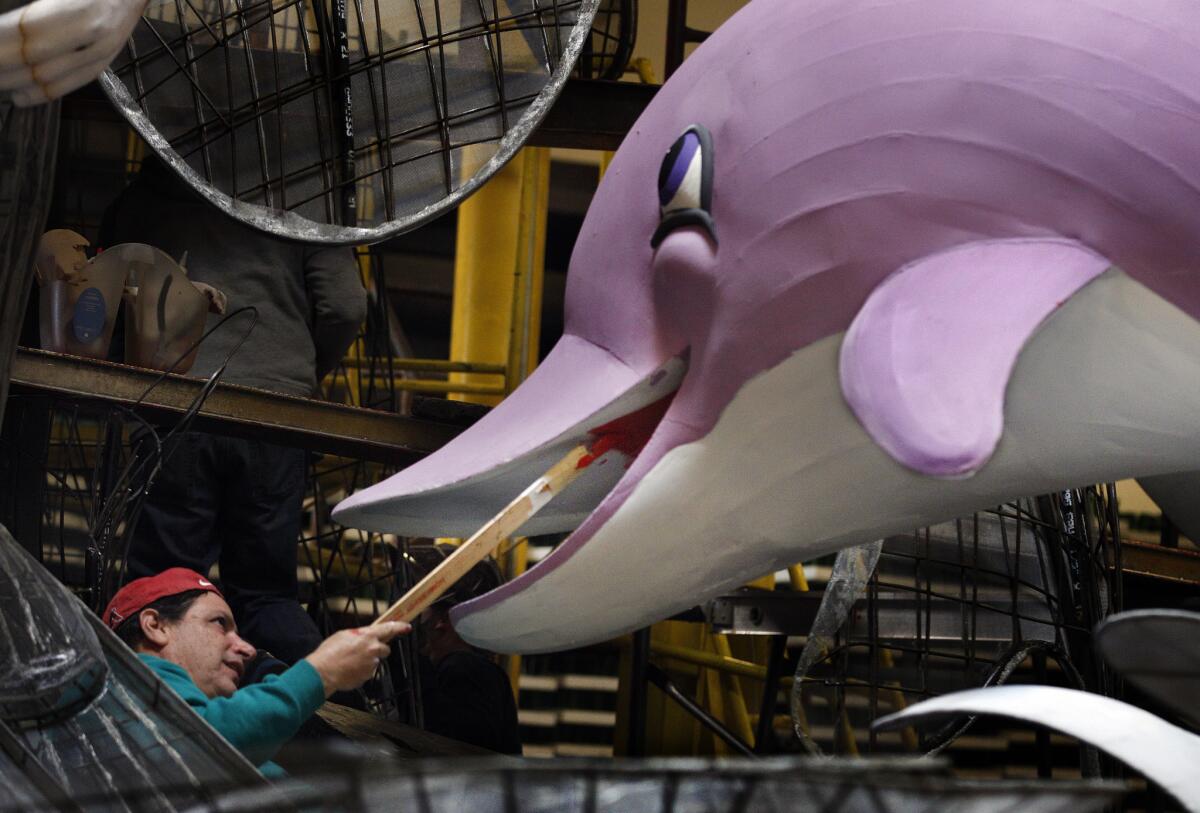An old rule may save the Rose Parade from getting rained on

- Share via
It could be a wet, wet New Year’s Day in Southern California. But Pasadena’s enviable record of dry Rose Parades should stand, thanks to a “Never on Sunday” rule dating back to the 19th century, officials said Tuesday.
A cold front from the north should bring rain to Los Angeles on Saturday, stretching into Sunday, Jan. 1, the National Weather Service forecast. But for only the 15th time in its 128-year history, the Rose Parade will be moved to Monday, Jan. 2, sparing thousands of spectators a soggy vigil.
The parade never has been, nor will be, delayed for rain, officials said. But a custom of shifting the parade a day later when New Year’s Day falls on a Sunday began in 1893 to avoid riling the horses hitched outside church and possibly disrupting the services inside.
The horses and hitching posts are gone, although the parade will have plenty of equestrian wizardry on display. But the Rose Parade, which is about nothing if not tradition — as well as tweaking hunkered-down East Coasters with images of sapphire skies and fecund floral displays — upholds the not-on-Sunday custom.
I’m not a big believer, but that suggests divine intervention.
— William Patzert, climatologist for NASA’s Jet Propulsion Laboratory
That should allow the flower-bedecked procession, which has only been rained on 10 times in its 127 years, to escape unscathed, said William Patzert, a climatologist for NASA’s Jet Propulsion Laboratory. Based on its century-old record, the chance of showers during the Rose Parade is 8 %, he added.
“I’m not a big believer, but that suggests divine intervention,” Patzert said. “It should be a cool, cloudy gorgeous day for the parade.”
Traveling down the spine of the Sierras, the storm will feed the mountain snow pack and reservoirs, as well as Southern California gardens, if it comes as predicted, Patzert said, and could bring downtown Los Angeles’s December rain total to 5 inches. That’s well above the region’s average December rainfall of 1.9 inches, he added.
“December has been sweet,” Patzert said. This month’s rain came gently and sank into the ground, as opposed to 2010’s Pineapple Express storm, which dumped so fast and furious that most of the water ran into the ocean, he said.
But in what has become a familiar refrain, even great downpours during Los Angeles’ traditional January-to-March rainy season won’t relieve Southern California’s drought, Patzert said. Although Northern California’s above-average rain in the last year somewhat restored the snow pack and reservoirs there, it will take years of storms to bring Southern California’s underground basins to normal levels, he added.
Still, the autumn rains, including the storm anticipated at the end of this week, are welcome, he said.
“As it moves down the state and gets us last, it benefits the entire state,” Patzert said. “The urban forest is happy.”
Follow me for homelessness news on Twitter: @geholland
Click here for a Spanish version of this story
ALSO
Volunteers head into crunch time to build Burbank’s Rose Parade float
Tournament of Roses cancels Equestfest horse show over equine herpes virus outbreak
The Rose Bowl moved in 1942, the only time the game hasn’t been played in Pasadena. Here’s why
More to Read
Sign up for Essential California
The most important California stories and recommendations in your inbox every morning.
You may occasionally receive promotional content from the Los Angeles Times.












